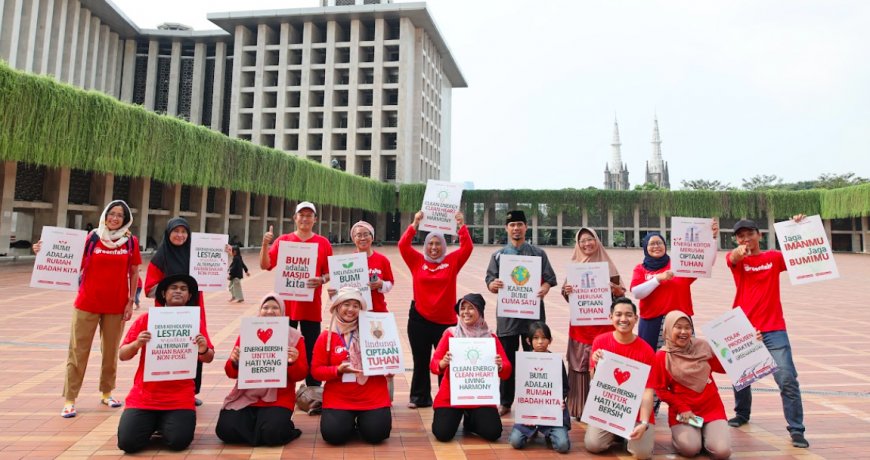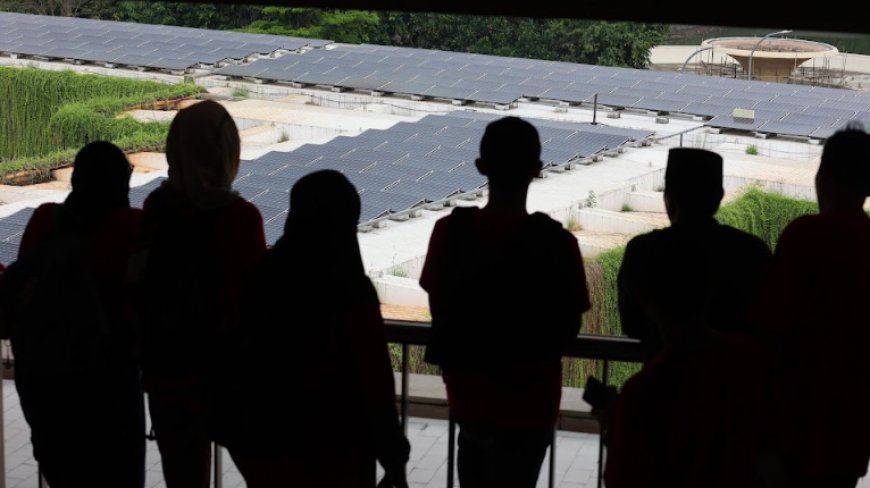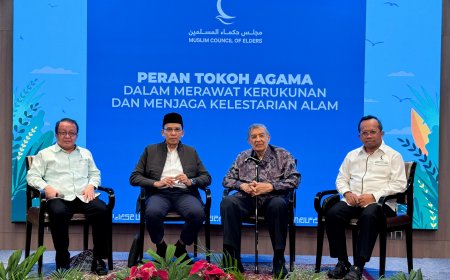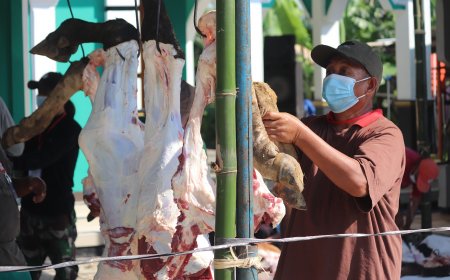Building a just energy transition in the perspective of religious spirituality

By HENING PURWATI PARLAN, Coordinator of GreenFaith Indonesia, Vice Chair of LLH PB PP 'Aisyiyah
There were 196 countries agreed to move together to address climate issues at the 21st Committee of Parties (COP) in Paris in 2015. They agreed to keep the earth's average temperature below 2 degrees Celsius, with a minimum of 1.5 degrees Celsius. However, the mission was not successfully achieved because in 2023 the earth's temperature once reached more than 2 degrees Celsius and it became the hottest year on earth, the temperature touched 2.06 degrees Celsius on November 11, 2023 based on data from the European Union's Copernicus Climate Change Service.
Meanwhile, the United Nations Environment Program's (UNEP) annual emissions gap report released on October 20, 2023 showed that there were 86 days when the Earth's temperature exceeded 1.5 degrees Celsius during 2023 as of early October. Although the data is not the earth's average temperature, the extreme climate change indicates that the earth's temperature is not getting better this century. Meanwhile, the earth's average temperature throughout 2023 is estimated to be at 1.3-1.4 degrees Celsius.
The UNEP report also revealed that world governments are not on the track to reduce greenhouse gas emissions. The Earth is no longer in a state of "global warming" but is already in a condition of "global boiling" as stated by UN Secretary-General Antonio Guterres last July. Storms, floods, rising sea levels, are increasingly common due to climate change.
The UN and the World Meteorological Organization (WMO) have called on countries to radically address the climate crisis as the Earth's temperature continues to rise. Based on the COP 21 in Paris, developed countries will help developing countries to address climate issues with financial assistance, energy development and transfer, and capacity building of developing countries to take action.

Since then, several countries have set targets and made various efforts to reduce carbon emissions. Japan aims to reduce greenhouse gas emissions by 46 percent by 2030 and become carbon neutral by 2050. New Zealand aims to reduce carbon emissions by 50 percent by 2030 and become carbon neutral by 2050. Meanwhile, the UK has an ambition to reduce carbon emissions by 68 percent by 2030.
Developed countries need to take much responsibility for this climate anomaly because they are the largest contributor to carbon emissions in the world sourced from coal, oil, natural gas. Based on data from the Global Carbon Project Institute, in 2022 there were 36.6 gigatons of carbon produced from fossil fuels. Coal is the largest contributor of carbon, which is about 15.1 gigatons of pollutants or 41 percent of the total amount. In second place is petroleum with 12.1 gigatons of carbon, then natural gas with 7.9 gigatons of carbon, and finally the cement industry which contributes 1.5 gigatons of carbon. The largest carbon contributing countries are China (11.4 gigatons), the United States (5.1 gigatons), India (2.9 gigatons), and the European Union (2.8 gigatons).
The 28th Conference of the Parties (COP28) of the United Nations Framework Convention on Climate Change (UNFCCC) held on 30 November-12 December in the United Arab Emirates emphasized the urgent phase-out of fossil fuels and increased efforts to end deforestation prioritizing the rights of vulnerable groups and communities, indigenous peoples, climate peoples, and climate defenders.
The movement from all stakeholders strengthened, especially from multifaith groups and for the first time at COP28 there was a special pavilion for religions and beliefs, the Faith Pavilion. During the 12 days of COP28 in Dubai, the Faith Pavilion program was organized to serve as a medium for problem solving, partnerships, and holistic recommendations to improve environmental justice. The Faith Pavilion was the first ever multi-faith event. The Faith Pavilion brought together religious representatives, indigenous peoples, political leaders, youth, and other civil society. The program facilitates intergenerational, interfaith dialogue to enhance the role of religions/spiritual beliefs in the climate movement, advocating for holistic solutions to protect the earth and climate in the long term.
The Faith Pavilion provides opportunities, primarily, for religious leaders to make quick and effective climate action decisions. This shows that there is an awareness of the importance of involving religion and faith in efforts to address the climate crisis.
The climate rescue movement based on the spirit of religion or belief is important to tighten supervision of practices that are detrimental to climate stability. Religious and faith communities will be very effective in educating their respective communities about the climate crisis because they are the groups that are most affected by this crisis. Religious organizations have strong authority to criticize practices that deviate from the teachings of their religion or belief. Religious leaders serve as moral guardians, moral mentors and catalysts for change. Religious institutions so far have had great influence, as well as great financial power, so they have the potential to be utilized in working together on actions to improve the quality of the environment.
Pope Francis and the Grand Imam of Al Azhar, Egypt, Ahmed Al-Tayeb signed an interfaith statement in support of climate action. The signing was announced during the inauguration of the faith pavilion at COP28 in Abu Dhabi. The document was also signed by religious leaders from around the world to demonstrate the commitment of those representing faith communities to take swift and decisive action to address the climate emergency. They are working together on the global stage because they want to inspire ambitious goals in calling for concrete commitments on climate change. There are more than 50 religious organizations in the community.
Religion also has a collective influence that includes many people, especially its adherents, so it is this religious influence that the community uses to inspire concrete, environmental justice or clean energy transition actions. The principle of justice in the energy transition is expected to cause no harm to anyone and foster peace with all beings, urging government officials, heads of state, and business people to accelerate the energy transition, transitioning to a circular model of life in harmony with nature, adopting environmentally friendly energy quickly. In every religion, there are various foundations that can be used as a basis for climate action, especially the energy transition.
In Islam, for example, utilizing fossil fuels is permissible, but if the use of fossil fuels causes harm, either due to mining or the process of using them, to many people, damaging the environment and having a negative impact on future generations, then the law of using fossil fuels becomes impermissible. More bad than good is the reason why the law of using fossil energy is not permissible. So switching to green energy is a must when viewed from this Islamic law.
Likewise, the Catholic perspective holds that the earth is a common home (domus communis) that must be preserved. Humans have no right to waste and destroy nature and its resources for any reason. In line with the Catholic perspective, the Protestant Church, based on the HKBP in 1996 decided to take responsibility for protecting the environment, which has been exploited by mankind in the name of development and encourages the use of environmentally friendly technology, green energy, wind energy.
This view also exists in Hinduism, in Sanskrit it reads "Vasudhaiva Kutumbhakam" which means "the whole world is one family". Hinduism has teachings about five important elements that make up the environment, namely Panca Maha Bhuta: Pertiwi (solid/earth element), Apah (liquid/water element), Teja (light/fire element), Bayu (air element), and Akasa (space element). These five elements are interconnected and interdependent, so they must be properly maintained. Consequently, a clean energy transition is necessary to keep the five elements in balance.
Buddhism views ecosystems as inter-dependent and integrative in an ecological order that should not be exploited. Humans should not consider nature as an inferior object and inanimate entity but nature needs to be seen as a proactive force that keeps the universe in balance. Buddhist ethics emphasizes on active efforts to use these limited natural resources wisely. Nature-conserving behavior is one of the spiritual and ethical foundations for Buddhists. This religious spirit supports the energy transition from dirty energy to clean energy.
The Khonghucian view is precisely in the Book of Zhong Yong, the Prophet challenges us as a people to be able to live in the Perfect Middle, "It is perfect to live in the Perfect Middle; it is a pity that it has long been rare among the people who can carry it out!" (Zhong Yong II: 1). Living in the Perfect Middle is to base our every behavior on the Virtues whose seeds Tian has bestowed upon us, namely Love, Truth, Decency and Wisdom, and to uphold an attitude of Trustworthiness. In relation to supporting energy transition activities, then the Confucian People should prioritize Energy Conservation activities and base these activities on the awareness to develop the Seeds of Virtue.
The position of religion in this case is as a strong supporter because the main actors are world and state governments. Religion with the spirit contained in it is a very important support in carrying out climate actions, energy transition in a fair and equitable manner because most of humanity claims to be affiliated with religion. "Religious commandments" have a big place in the hearts of their followers, so that spirit can be a very strong driver for them to move together to make changes and realize an equitable energy transition. Therefore, instead of managing mines that will actually cause a lot of mudhorot, it is better for religious groups to initiate and build fair energy transition models for the sake of natural preservation and the sustainability of generations.







